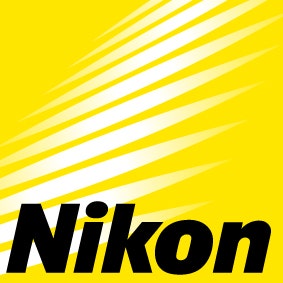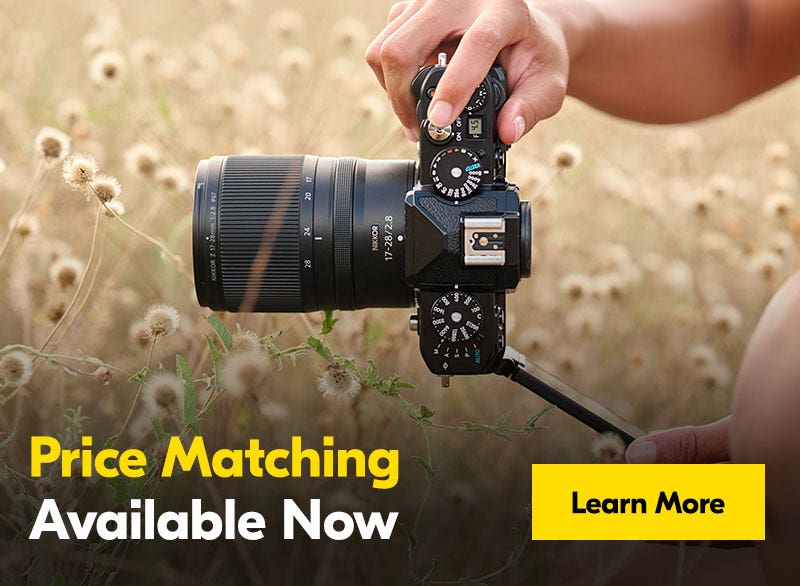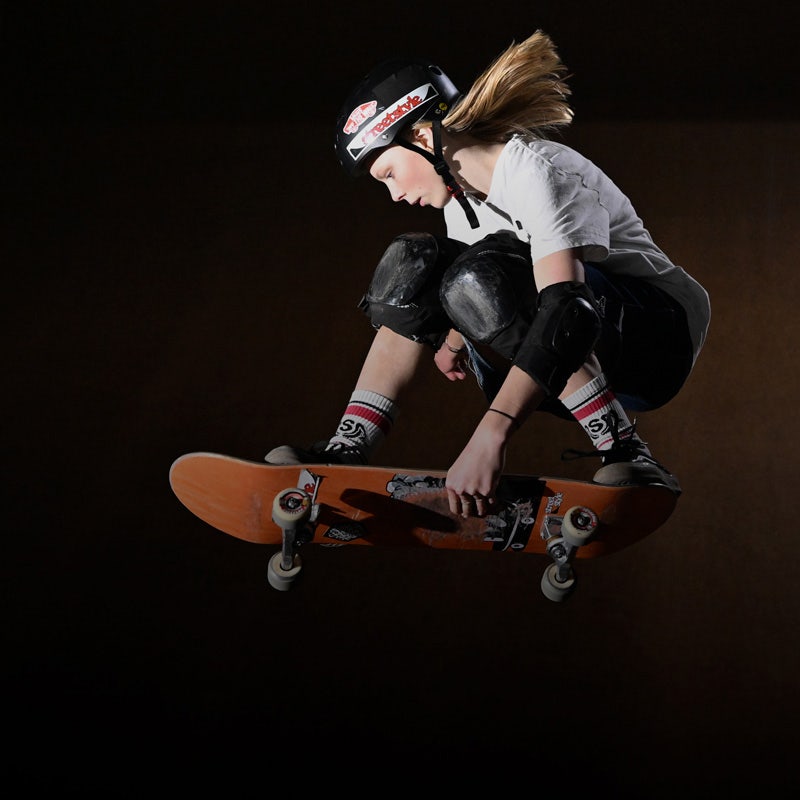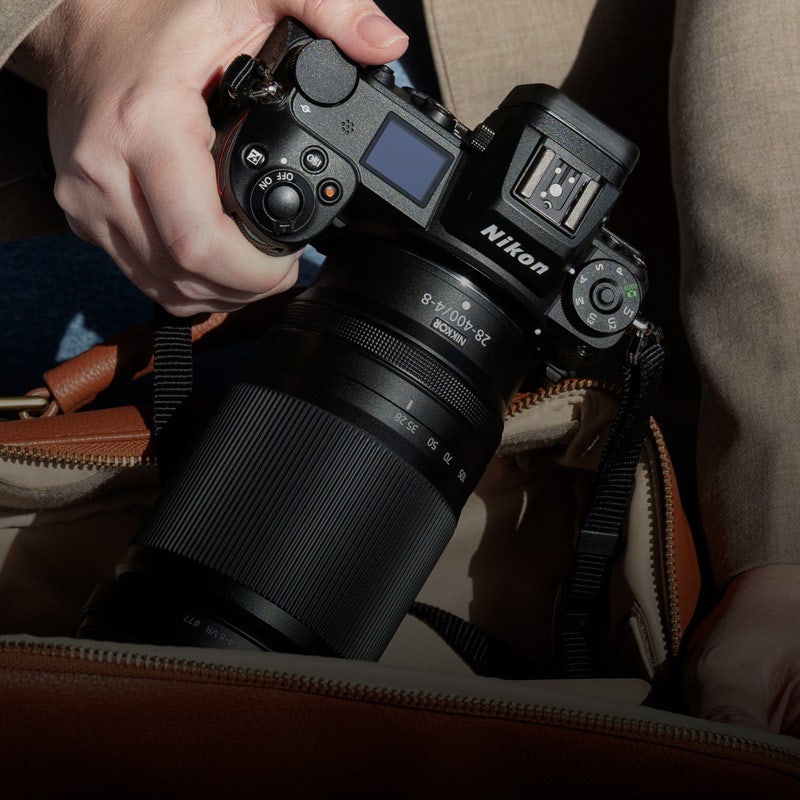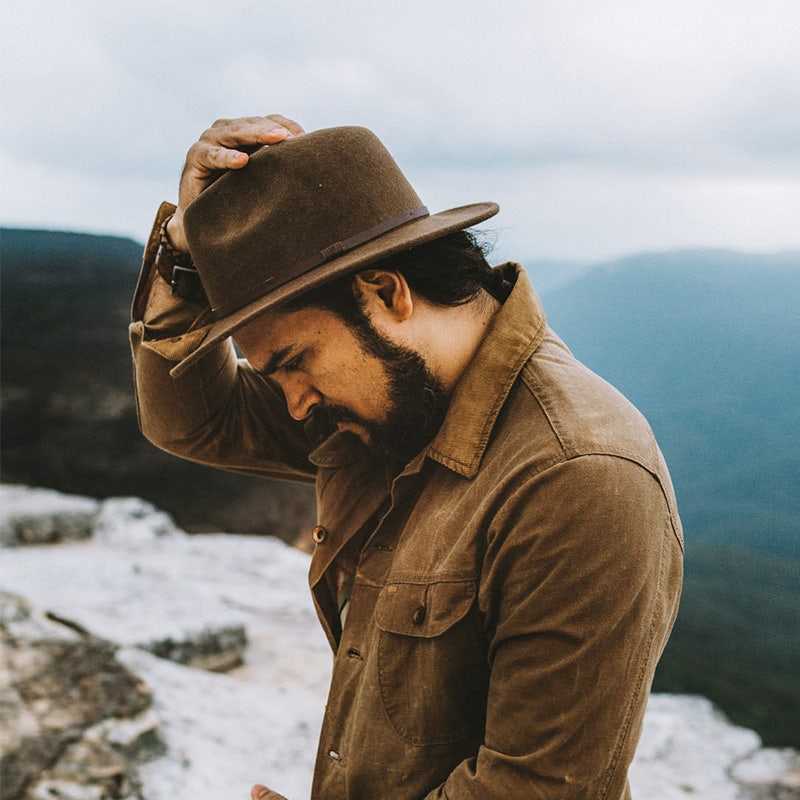Charles Davis has carved out a niche photographing all critters great and small, while framing Australia through a wider lens.


Cooma-based nature photographer Charles Davis knows animals like the back of his camera-holding hand. He has spent his entire life braving blankets of snow in order to show a rarely presented vision of Australia – one far removed from the sunburnt country depicted on the cover of travel brochures. A sixth-generation Snowy Mountains local from a family of artists and scientists, Davis’ work is sought-after by casuals and collectors alike and has been recognised with a slew of both national and international awards. His eagle eye for —and rare understanding of— wildlife is coveted by the world’s leading nature documentary filmmakers. Davis’ book, Kunama (Ngarigo for ‘snow’), is set to be released in 2021 and is just one of many active projects he’s producing in order to change the way the world thinks it’s like to come from the land down under.
For someone with such an esteemed career, Charles Davis is disarmingly casual in demeanour. That is, until he talks about Australia’s native wildlife and snowy wilderness. In those moments, his eyes widen, his passion intensifies and it’s hard not to get swept up in his curiosity and verve for the glory of nature.
We sat down with Davis to get a sense of how this passion came to be.
How did you get started in photography?
I always had an artistic side, but I wasn’t encouraged to do art at school. I was told I wasn’t good at it, which is quite funny. Granted, there’s always been plenty of artistic people around me, not ever people pushing though.
When I turned 21, I was snowboarding full time, travelling the world, seeing all these amazing things and coming back with nothing. So, I said “oh, I should get a camera”. I got a little point-and-shoot and from then on, I was like “huh, taking photos is really fun”. I wasn’t really taking photos of snowboarding, I was just going out and capturing nature, which is when I knew I needed to take things up a level. This is when snowboarding was dying off in my mind, as I got more and more hurt.
So, I bought a big-boy camera, a Nikon D90, new body. I bought some lenses off a snowboarding photographer mate and he said “I’ll sell you these on one condition, that you don’t undercut me”. Because in the snowboarding world it’s about who you know, not the kind of camera you’ve got. You go out and you photograph your mates and we had the same mates. I said “that’s fine”. And I just went out and photographed eagles and bears and had a great time.
When I came back to Australia, I realised that all this stuff I’d learned growing up about how to hunt, how to track, how to find animals – all these things I’d been taught my whole life, kind of came into click.
Click? Is that an intentional pun?
[Laughs] Yeah, “click”. Nah, it all just started to come together. When I started thinking about going out into the snow, which is something I’d done consistently —you could say I had a double-PhD in being a snow-bum— you take all that and add the wildlife stuff and the camera, and it just organically clicked. I didn’t seek it out. It found me, I guess.
Can you talk a bit about your journey from that organic click to becoming a recognised nature photographer?
So, I was taking all these photos and my family were saying “oh, these are really good”, but you know, they’re your family, so they’re kind of full of it… [grins] just being supportive. But then, family friends started wanting to buy my photos, so I had to find a printer. I wanted to get everyone off my back while I took photos, so I went and did an ecology degree. And it worked, for four years. I spent those four years taking photos.
The degree… was pretty easy. That’s not too hard. You just pass things. I wasn’t fazed by that at all. But, I’m also dyslexic, so I kind of used photos to pass. I’d drop photos into every assignment that I could and because it was ecology, it blended together.
I started entering competitions. I entered ANZANG, the Australian Geographic comp, and the first year I entered I won my category. I ended up selling a lot off the back of that. The next year I entered and I won again. Then, I got into the top 100 of the best photos ever taken for Nat Geo.
During that time, I was working a crappy retail job – at Quicksilver. And one day, I had a bit of a spat with an assistant manager, where I basically told him to shove it. I was making more money selling photos than I was at the job, so I quit and started doing photography full time. Over winter, I opened a little pop-up gallery in Cooma. This little empty shop. Did it up. Super sketchy, every photo was covering a hole in the wall. But, it worked, and I was selling a picture every day for three months.
What?! That’s unheard of…
Yeah, it is unheard of. Even the big galleries don’t do that. So, it killed it. And I haven’t looked back since. But I’ve been very lucky. Lucky, in the sense that I could go out and shoot exactly what I wanted to shoot and people would buy it. Which is a nice thing. Because unfortunately, most people are forced into shooting what they don’t want to shoot.
You take a “fine art” approach to your work. Can you tell us a bit about what that means to you?
One day, I went out photographing in a reserve in Canberra and there was this ‘birder’…
Birder?
A birder, as in, they photograph birds.
Oh right, makes sense.
He was like “hey, that’s a nice camera”. You know, all that silly stuff between photographers. He asked if I ever sell photos and I said that I did. He showed me some of his photos and they were all, like, tight shots of birds on sticks. The cliché. Then I showed him some of mine and they were wider and black and white and you know, included more leading lines and more of the environment.
He looked at them and said “oh, you’re a wanky artist.” I’d never encountered that before because I don’t really hang out with other photographers. I don’t hang out in groups or join clubs. I just shoot things the way I want to shoot them without any influence twisting it.
The photos I like to take are… well, I place a very high value on my individuality. I always have, even with my snowboarding tricks. The way I like to shoot is bigger, wider, prettier. It’s not just about the animal it’s about the whole environment. It’s about taking a scene that would be amazing without an animal and then placing the animal in it.
So, the “fine-art” approach is when the image becomes more of a story than is just a face. And the snow lends to that amazingly well because it’s just high-key contrast. You can tweak that into very moody, pretty, different stuff very quickly.




Images by Charles Davis
It’s safe to say you have an affinity with animals. How did that come about and how does it play into your work?
Out here, where I live, my nearest neighbour is two kilometres away and our farm is 5,000 acres. It’s huge. Half of that is basically a private national park. I don’t say that to gloat, in any way, it just is what it is. My grandmother bought 2,000 acres for a dollar per acre, back in the day. No one wanted it.
But it’s full of lyrebirds and eagles and platypus and echidnas and just so much life. Two major documentaries were shot just on the farm here. We shot one for Apple, that was crazy. We shot The Magical Land of Oz here, with Barry Humphries. I shot half of the kangaroos-in-the-snow sequence for David Attenborough’s Seven Worlds, One Planet. The rest of the time I’m a ‘fixer’, so the major documentary crews come to me and say “we want this” and I say “cool, I’ll make that happen”. I put them in the right spot; I tell them what to do.
Pretty impressive.
And I get paid! But it’s quite stressful [laughs]. So yeah, the affinity with animals could be summed up by saying: I’ve realised that I’m not a great photographer. That’s not my strong suit. It’s just finding the animals. I’ve taken other people out with me and put them in the same spot as me. I’ll find the animal. And they get photos that are just as good as mine. But if I didn’t put them in the right spot, they wouldn’t have got them. That’s the major difference.
I’m good at going out, weighing all the variables in my head and picking the most likely one. I don’t know how you describe it but I put it down to my dyslexia and looking at things a little bit differently. I can look at where an echidna is and wager he’s probably going to climb onto that log, so I’m going to go and lie over there for forty minutes and he’s probably going to come to me. So, it’s hedging your bets… and then relying on a little bit of luck.
Hearing how you talk about your work and seeing your photos, it’s hard not to think that when you say you’re not a great photographer, there’s a bit of modesty at play…
[Laughs] Well, it’s hard. Because when you say you’re a photographer, the camera’s just a tool, isn’t it? Anyone can hold a pen but it doesn’t make them an author.
But a pen doesn’t come with fifty buttons and dials and settings and variables to think about. You just have to hold it at the right angle.
True, but there are a thousand different ways that you can make something come out of it. It’s as big as your mind can possibly make it.
I don’t know, maybe I’m an alright photographer, but my strong suit is finding the critters. I break a lot of rules that would make other photographers cringe. I have no qualms with shooting at stupidly high ISOs. I don’t care if I shoot in the middle of the day. I’ll do nasty things. A lot of the time I’ll just call bull on these rules. Photographers aren’t buying your stuff, it’s normal people. You need to pick out what normal people look at.
One of my images is of a lyre bird and it’s one of the nastiest, noisiest, grainiest, out-of-focus things. I got it printed up and they said “this is horrible, why would you do this?” and it sold within two days of printing. Because most people don’t know what noise is, they don’t know what grain is, they don’t care about out-of-focus… they just see pretty.
What role does your hometown of Cooma play in your work?
The only reason I make a living out of what I do, is because I have a niche. So, in a world of 7.5 billion people, if you have a niche, you are sitting pretty. I grew up in Cooma. I’m sixth-or-seventh generation here (which is also not bragging, I can’t date anyone locally, it makes it an absolute nightmare – literally).
I live on the doorstep of the Main Range which is the biggest snow-covered area in Australia. It’s massive and there’s so much wildlife in it. Having the farm has been a major asset. Cooma has been very important. People are going to come from all over this winter and see this weird part of Australia. If you came here, you’d say “wow, that’s a bit special”.
There are plenty of people that take photos of the snow, but nobody is stubborn enough to take them of animals in the snow. They just don’t have the patience.
I must admit, I wouldn’t normally associate Australian animals with the snow.
That’s it right? It’s a contrasting thing. You see a kangaroo in the snow and it messes with your head because all you know is this cliché of Australia, which is dry deserts and beaches and you’re like “what’s it doing in the snow?!?”
There are kangaroos in the snow?
[As if stating the obvious] Yeah. There’s everything in the snow. They’re all in the book I’ve got coming out – dingos, emus, quolls. All the critters. And parrots… the most vibrant, flaming rosellas and giant black cockatoos that love flying in blizzards. Red robins that you just see in the form of a little spark in a snowstorm. It’s just nuts. So much life. The more I go out, the more I realise that there’s just more and more and more.
Do you have a favourite image that you’ve taken, if so, which and why?
As a professional photographer, the standard answer is “the next one” [chuckles]. I don’t know, it’s tricky, because your favourite image changes. And actually, it usually is the next one because you get bored of all the other ones. Then you get a new one and you’re like “that’s kind of cool” - it’s new and it’s different.
That bloody wombat picture behind me [moves aside in his Zoom window to reveal a framed image of a wombat in the snow] – that’s my best seller. That pays my rent. Wombats pay my rent.


Image by Charles Davis
Well, instead of a favourite, what about a memorable experience with an animal subject, or an image with a memorable story behind it?
They’ve all got a story. [Thinks] I’ve got one called The Ascent on my website. It’s of an echidna looking up a hill. That one took two days to get. I probably skied fifteen kilometres per day, even in the dark. Skiing uphill, downhill, tracking him…
Wait, so the same echidna?
The same echidna.
Did you just happen to stumble upon him and decide that day was echidna day, or did you go out there looking for one?
Oh, no, I went out looking for him. The windows for all these things are really small. There’s roughly only a week that you can get echidnas in the snow. And it might end up being one day, because it’s the only day when the sun comes out. They need the sun, or they can’t function.
Echidnas don’t do anything logical; they just go. Never assume, they’ll prove you wrong every time. The first day, after all my efforts, he ended up in a hole. On the second day, I found him again by following the tracks from the day before and he was out and about and 200 meters up the hill. It came down to me penguin-sliding on my stomach, because snow is really noisy and echidnas are really sensitive to sound. So, I was trying to slide into the right spot.
Can you provide us with three nature photography tips?
One, is try to shoot differently. If you’re standing up, lie down. Get uncomfortable. Whether that’s on your knees or waist-deep in a frozen river. Obviously, don’t put yourself in stupid positions but if you’re not uncomfortable you’re not trying.
The other thing is, shoot from every single angle you can. When I find a subject, I’ll usually have a composition in my head and I’ll shoot that, but once I’ve got that, I’ll shoot it in many different ways as I can. As wide as I can. As tight as I can. I’ll move over here. I’ll use this stick, that stick. I’ll circle the entire animal to try and figure out the shot.
Thirdly, the best photos come from the worst weather days. People usually want to see things they haven’t seen and that’s usually weather that drives them inside. So, if it’s weather that makes you want to be inside, you should be outside. Into the fray.
I’ve heard you recently made the leap from DSLR to mirrorless, specifically the Z 7II. Can you tell us a bit about that?
It’s been good. Every time I go to upgrade a camera, it needs to do something that the other one didn’t. I’m not a huge gear person, I kind of thrash my gear. But I needed a camera that was silent. Because that has been the biggest pain for me. You know, I’ll spend two hours dragging myself through thistles and prickles and sticks and snakes just to get within a metre of something. And then you go [makes a clicking noise and gesture] and it’s gone.
So, that camera. With all those frames (what is it, eleven?) of dead silence. It’s just fantastic. And that was enough for me to swap.
And also, now, when you look through the viewfinder, you can’t stuff up the exposure. It’s impossible. What you see is what you get. That’s just one less thing to think about.
I didn’t need twenty new features. I just needed two features that were really beneficial and the Z 7II does both extremely well.
If we were to peek inside your gear bag, what would we find?
You would find a NIKKOR 500mm f/5.6 PF lens. A NIKKOR 24-70mm f/2.8. Then, NIKKOR’s new 70-200mm f/2.8… the Z Mount lens. A Nikon D850 and as we spoke about, the Z 7II.
Why did you choose Nikon?
You choose the brand that works for you and you stick with it… that’s basically it.
Check out Davis’ work here (at his self-admittedly outdated website, his new one is coming very soon). Keep an eye out for his debut book, Kunama, and an upcoming short film that puts what he does on full (and gorgeous) display.
